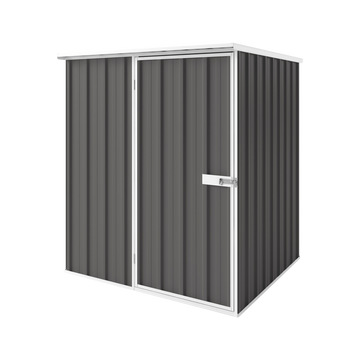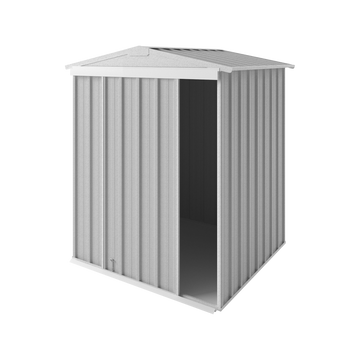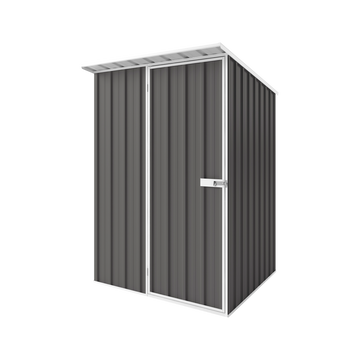What a beautiful time of year we find ourselves in, no? Winter is upon us and we’re all eager to curl up under a blanket watching episode after episode of our favorite shows. Even if you live in Northern Australia and you won’t experience much of a weather change, you know there’s something magical about this time of year that makes you want to settle in and relax.
But wait! Before you snuggle into the couch for those cold winter months, have you made sure that your garden is ready for a good winter hibernation? If not, you might not get the blooms and colour pops that you want come springtime!
With this winter garden checklist, your garden will be fully prepared to get some beauty rest in preparation for the spring thaw. And you can focus on your favorite winter activities, like finding the best winter beverage or perfecting your favourite veggie soup.
Get your garden ready for spring!
Say goodbye to your annuals
Now that it’s autumn, your annuals have started to wither and it’s time to say goodbye. They won’t come back next year, so pull them out - roots and all - and add them to the trash (or compost pile.) A few examples of common annuals are pansies, daisies, zucchini, sunflower, pumpkins, peas, dill, parsely, basil.
In some cases, you can harvest the seeds from these spent annuals and start them as seedlings in spring. Some of the easiest annuals for this are poppies, sunflowers, and snapdragons.
Now, if temperatures won’t drop in your area for quite some time, you might just be able to get a second round of annuals in your garden. There are plenty of annuals that thrive in autumn and early winter, so, once your summer annuals have died, replace them with these:
- Chrysanthemums
- Pansies
- Sweet Peas
- Cornflowers
- Daisies
Remove weeds
Although weeds will seemingly go dormant during winter, their roots will still be sapping nutrients out of the soil and damaging your garden. So, be as thorough as possible in removing the weeds without dropping seeds or leaving any roots in the ground.
It can be helpful to water the garden the night before to lower the risk of soil disturbance for your other plants.
Also, remember to dispose of the weeds instead of composting them with your other clippings. You don’t want any seeds to sprout and make their way back into your garden!
Take care of your perennials
If you had a successful garden this past summer, you might have some overgrown perennials that are prime for separation and replanting, or at the very least, some pruning.
In general, perennials are ready for separation when they’ve been in the ground for about 3 or 4 years. You’ll know they’re desperate for some extra room when they’ve stopped blooming as abundantly and the inner plant is looking a bit sad. Wait until the perennials have lost all of their flowers before separating them.
Whether you’re separating your perennials or not, you’ll want to do some pruning to ensure that the plants are using their energy efficiently during the colder months. Cut all the way down to the crown of the plant and remove the cuttings.
Autumn is also a good time to plant new perennials, if you’re looking to fill out your garden or replace the annuals with something more permanent.
Consider adding autumn-planted trees, shrubs, and bulbs
There are a few plants that can be planted in autumn in order to add some beauty to your winter garden or bloom fully in spring.
When it comes to trees and shrubs, consider planting these options that will thrive in the winter months:
-
trees like oranges or grapefruit. Make sure these trees get plenty of sun.
-
Acacia. This is a gorgeous flowering shrub that can be planted in autumn or spring. It’s plenty hardy, just make sure it gets lots of sunlight.
-
Spiraea. This shrub may not look its best during the winter months, but don’t let that dissuade you from planting it this autumn. Over the winter months, it will put down strong roots to give you a gorgeous bloom in spring.
-
Yews. If you’re looking for a hedge tree that will withstand frost and cooler temperatures, yews are a great choice.
Spring-flowering bulbs should be planted at this time of year to ensure that they’ll grow a strong root system before blooming in September. Here are a few options that are super easy to maintain and will give you vibrant colors in spring:
- Tulips
- Daffodils/ Jonquils
- Crocus
- Bluebells
- Hyacinth
- Buttercups
It’s important that you plant these options before the temperatures really start to drop. Sorry, you southern gardeners - your window is slightly shorter for planting in autumn so you’ll need to plan in advance.
Mulch and fertilizer
No matter whether you decide to plant new bulbs and shrubs, or simply maintain the perennials, you’ll want to protect your garden family with some new mulch. This is going to keep the soil warm and protected from frost.
Now, whether you want to fertilize before winter is entirely up to you. Some gardeners opt for a mulch with fertilizer or apply fertilizer on top of the mulch so that it sinks in slowly over the winter months. Because the roots are still actively growing throughout the colder season, the fertilizer can give your plants and extra push for a bountiful bloom in spring.
Of course, if you don’t use fertilizer, that’s fine too. Just make sure that you invest in a good-quality composted mulch. This is going to be the best for your garden. Check out this article by Better Homes & Gardens on unique mulch options .
Lawn care
You’ve done a lot for your outdoor garden, and now let’s talk about lawn maintenance. Just like you want to take care of your garden during these cooler months, your nice, green grass is going to need some love too.
You can take care of your lawn by raking away any leaves (you want those blades of grass getting all the light they can get) and mowing the grass as usual. And, even if you get rain showers more frequently during this season, don’t forget to water, especially if you see the grass looking a bit brown.
Before winter really sets in, put down more seed and a good-quality fertilizer. This is going to encourage grass growth and lower the risk of weeds taking over.
Consider your drainage
This might end up being a big project, and is actually best done when you’re first starting a garden or are looking to do a big overhaul. But, it’s going to improve the health of your plants so much that you’ll be glad you did it.
The benefit of doing this work in autumn or early winter is that if it turns out that you have to do a total garden renovation, you’ll still have time to rebuild your garden and give your plants time to settle in before spring. No bloomless summer!
One option for better drainage is to install a trench drainage system. This is going to prevent runoff from your patio from pooling in your garden by diverting it through plastic drains. It’s important that these drains are emptied in a stormwater system, and not the sewer, and you may have to get in touch with your local council to learn more about regulations.
Handyman is a great resource to learn how to install different drainage options in your garden. In particular, check out their articles on how to Install Drainage in the Garden and How to Improve Outdoor Drainage .
You don’t want to do this the wrong way - after all, a badly installed drainage system could actually make matters worse or threaten your house - so, if you’re not comfortable doing it yourself, get the advice of a professional in your area.
Save your potted plants
Up until this point, we haven’t mentioned any potted plants you might have in your garden. Maintenance for these will be a bit less work, but still really important. Because, just like the plants in the garden, these will also go through a dormant period that you’ll need to plan for.
So, just like you would with your ground-planted garden, you’ll want to weed and prune as necessary. And, if you’ve got some plants with roots that are getting crowded, now is a good time to repot. You can also fertilize, if you’d like.
If you have space in your home, it’s best to bring these guys inside where they’ll be less exposed to wind and cold. Make sure they’re in a place that has as much sunlight as possible. You’re already at a disadvantage with less sunlight during the winter months, so don’t make it worse by placing your potted plant in a dark corner.
If you’re having some problems with your potted plants once you move them inside, it’s likely a watering issue. Your house will naturally retain more water and when you add in a humidifier, that’s a lot of moisture for your plants. Don’t overwater.
Make plans for your patio furniture
During winter, you probably won’t be using your patio furniture, so you’ll want to find a good place to store it. If you have space in your backyard shed, awesome. Just make sure that it’s covered well with a tarp to protect it from dust.
Also, if there are fabric elements to your patio furniture, remove them, launder them, and store them inside. Pillows make the perfect bedding for mice, so do not store them in the shed unless they are in sturdy plastic bins.
This might also be a good time for you to buy new patio furniture for the next year. As furniture suppliers start switching their inventory from summer to autumn, be on the lookout for marked-down patio furniture that will look great in your garden come spring.
Clear out the garden shed
One thing that you might not have thought about is giving the garden shed, itself, some loving winter prep. You’re not going to be using your shed as much during the cooler months, which is ideal for pests to move in and make themselves comfortable.
So, before winter settles in, make sure to clear out, organize, and lock up your shed as much as possible. We have a whole article on winter prep for your garden shed, that you can read, here .
Garden tool maintenance
Finally, it’s time to consider your garden tools. If you have power tools for your garden, like a lawn mower or weed whacker, this is a good opportunity to make sure that everything is running smoothly and ready for winter.
When winter hits full-on, you might consider removing the battery from your lawn mower and storing it separately. Make sure the location of the battery is dry and cool. You’ll also want to drain the fuel and clean the entire mower to prevent damage.
This is also a good time to take care of your non-motorized garden tools as well. Pruning shears and other tools with blades should be cleaned, sharpened, and rubbed with linseed oil to prevent water accumulating on the metal and rusting over the winter months.
Put in the work now to have a gorgeous garden in spring!
Before you dig into your closet for your favorite Winter sweaters, it’s time to put on your garden gloves and give your garden some last-minute love and care before the winter chill really sets in.
And, even if you live in a temperate climate, this is a good time of year to start a new chapter in your garden and do the improvements you’ve been meaning to do all summer.
Your plants will be so much healthier and you’ll get a striking bloom in spring after winterizing your garden.
If you enjoyed this article, send it to your garden-loving friends! You can motivate each other to do those last minute winter prep tasks!


















